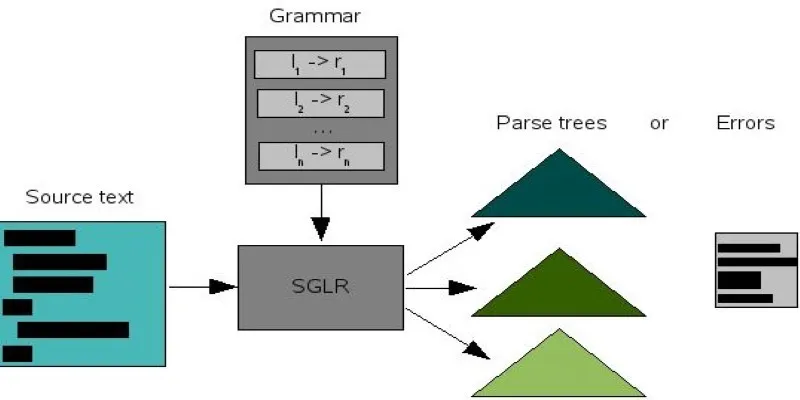Machine learning is revolutionizing industries by driving automation across sectors such as healthcare and finance. As the demand for AI and ML professionals continues to rise, it’s becoming one of the top career paths for 2025. This comprehensive guide will outline the essential skills, tools, and pathways to help you start or advance your journey toward becoming a successful machine learning engineer.
What Does a Machine Learning Engineer Do?
 A machine
learning engineer’s primary role is to design artificial intelligence models
that analyze data to make intelligent decisions and implement these models in
production environments. Unlike software engineers who develop rule-based
systems, machine learning engineers create algorithms that learn from data and
improve over time.
A machine
learning engineer’s primary role is to design artificial intelligence models
that analyze data to make intelligent decisions and implement these models in
production environments. Unlike software engineers who develop rule-based
systems, machine learning engineers create algorithms that learn from data and
improve over time.
The primary tasks of a machine learning engineer include:
- Creating machine learning models using both supervised and unsupervised learning systems.
- Training models to enhance their performance.
- Deploying models into live operational systems for practical applications.
- Handling both structured and unstructured data volumes using big data tools.
- Collaborating with data scientists, software engineers, and business teams to ensure AI solutions meet essential business requirements.
Machine learning engineers play a crucial role in various fields, including healthcare for disease prediction, finance for fraud detection, and retail for personalized recommendations.
Why Choose a Career in Machine Learning?
Machine learning is a rapidly growing field with numerous career opportunities in the tech industry. Here are some reasons to consider becoming an ML engineer:
- High demand and job security: Companies are always on the lookout for skilled AI and machine learning professionals.
- Attractive salaries: ML engineers are well-compensated due to their specialized skills.
- Innovative and challenging work: You’ll be working on cutting-edge technologies that shape the future.
- Career growth and flexibility: ML skills are applicable across various industries such as healthcare, finance, and e-commerce.
Essential Skills for a Machine Learning Engineer in 2025:
To thrive as a machine learning engineer in 2025, you’ll need a blend of technical skills, problem-solving abilities, and a forward-thinking mindset. Here are the key areas to focus on:
1. Master Programming Skills
Programming is the backbone of machine learning, making strong coding skills essential. Python is the preferred language for ML developers due to its simplicity and powerful libraries like TensorFlow, PyTorch, and Scikit-learn. However, other programming languages also play a significant role:
- R: Ideal for statistical modeling and data analysis.
- Java and Scala: Perfect for working with big data tools like Apache Spark.
- C++: Great for high-performance computing in ML applications.
Having a solid grasp of these languages will enable you to tackle a wide range of ML projects.
2. Understand Mathematics and Statistics
Math is at the core of machine learning. To understand how ML algorithms work, you’ll need a strong foundation in:
- Linear Algebra: Essential for working with vectors and matrices in ML.
- Probability and Statistics: Core concepts include distributions, Bayesian inference, and hypothesis testing.
- Calculus: Necessary for optimizing ML models using derivatives and gradients.
These topics will help you comprehend what’s happening under the hood of ML algorithms.
3. Get Comfortable with Data Handling
Since machine learning relies on data, knowing how to process and manage it is crucial. This includes:
- Data Preprocessing: Cleaning and transforming raw data into usable formats.
- Feature Engineering: Creating and selecting relevant features for your models.
- Databases: Using SQL for structured data and NoSQL systems for unstructured data.
Additionally, tools like Apache Hadoop and Spark are invaluable for efficiently handling massive datasets.
4. Learn ML Algorithms and Techniques
Understanding ML algorithms is fundamental. Key techniques include:
- Supervised Learning: For tasks like spam detection or image recognition.
- Unsupervised Learning: Ideal for clustering and anomaly detection.
- Neural Networks and Deep Learning: Powering cutting-edge applications like self-driving cars and virtual assistants.
Knowing when to use each technique will help you effectively solve a diverse range of problems.
5. Focus on Model Deployment and Cloud Tools
Building a model is just one part of the process—you also need to deploy it for real-world use. Key points include:
- Cloud Computing: Platforms like AWS, Google Cloud, and Azure facilitate deployment.
- MLOps (Machine Learning Operations): Tools like Docker and Kubernetes streamline ML workflows.
- APIs and Frameworks: Frameworks like Flask and FastAPI allow you to deploy models as web services.
Mastering deployment ensures your models are ready to deliver value in practical applications.
In summary, refining these skills will prepare you to excel as a machine learning engineer in the evolving tech landscape of 2025.
Steps to Become a Machine Learning Engineer in 2025:
Becoming a machine learning engineer in 2025 involves combining technical skills with practical experience while staying updated on advancing technologies.
1. Build a Strong Educational Foundation
Start with a degree in computer science, data science, or AI, as these provide a solid foundation. However, many ML engineers are also self-taught. Online courses or boot camps on platforms like Coursera, Udacity, or edX can help you learn the basics.
2. Learn Programming and Key ML Tools
Begin by mastering Python. Then, dive into widely used ML libraries such as:
- TensorFlow and PyTorch for deep learning projects.
- Scikit-learn for building machine learning models.
- Pandas and NumPy for working with and analyzing data efficiently.
Hands-on practice with these tools will help you solidify your programming skills.
3. Build Real Projects to Gain Practical Experience
Working on projects is crucial for applying what you’ve learned. Here are a few project ideas to get started:
- Use ML models to predict future stock trends.
- Build a chatbot with natural language processing (NLP).
- Create an image classification model using deep learning.
These projects will also help you build a portfolio to showcase your experience.
4. Compete in Kaggle Challenges
Participate in Kaggle competitions to:
- Gain hands-on problem-solving experience.
- Collaborate with and learn techniques from top data scientists.
- Sharpen your data management and model-building skills.
5. Learn Big Data Tools
Understanding big data tools is important, as many companies handle large datasets. Become familiar with technologies like Apache Spark and Hadoop to manage and analyze data at scale.
6. Understand Model Deployment and MLOps
Deploying models is a key part of an ML engineer’s role. Learn how to:
- Build APIs for your ML models using frameworks like Flask.
- Deploy models on cloud platforms like AWS, Azure, or Google Cloud.
- Automate machine learning pipelines with MLOps tools.
7. Build a Strong Portfolio
Maintain a GitHub repository with your projects to demonstrate your abilities. Writing blog posts or sharing your insights into machine learning can further enhance your visibility in the field.
8. Start Applying for Jobs
Search for entry-level roles, internships, or freelance opportunities on platforms like LinkedIn and other job portals. These positions will help you build industry experience and refine your skills.
Future Machine Learning Trends (2025 and Beyond):
 As AI continues to
evolve, here are some trends you should keep an eye on:
As AI continues to
evolve, here are some trends you should keep an eye on:
- AutoML: Simplifying machine learning through automated tools.
- Explainable AI (XAI): Making AI models more transparent and easier to understand.
- AI for Sustainability: Leveraging machine learning to tackle environmental challenges.
Conclusion
Pursuing a career in machine learning is exciting and full of potential. By focusing on gaining programming skills, a strong understanding of ML algorithms, and practical experience, you’ll be well-equipped for success. Keep learning, stay hands-on with projects, and follow emerging trends to thrive in this dynamic field.
 zfn9
zfn9























